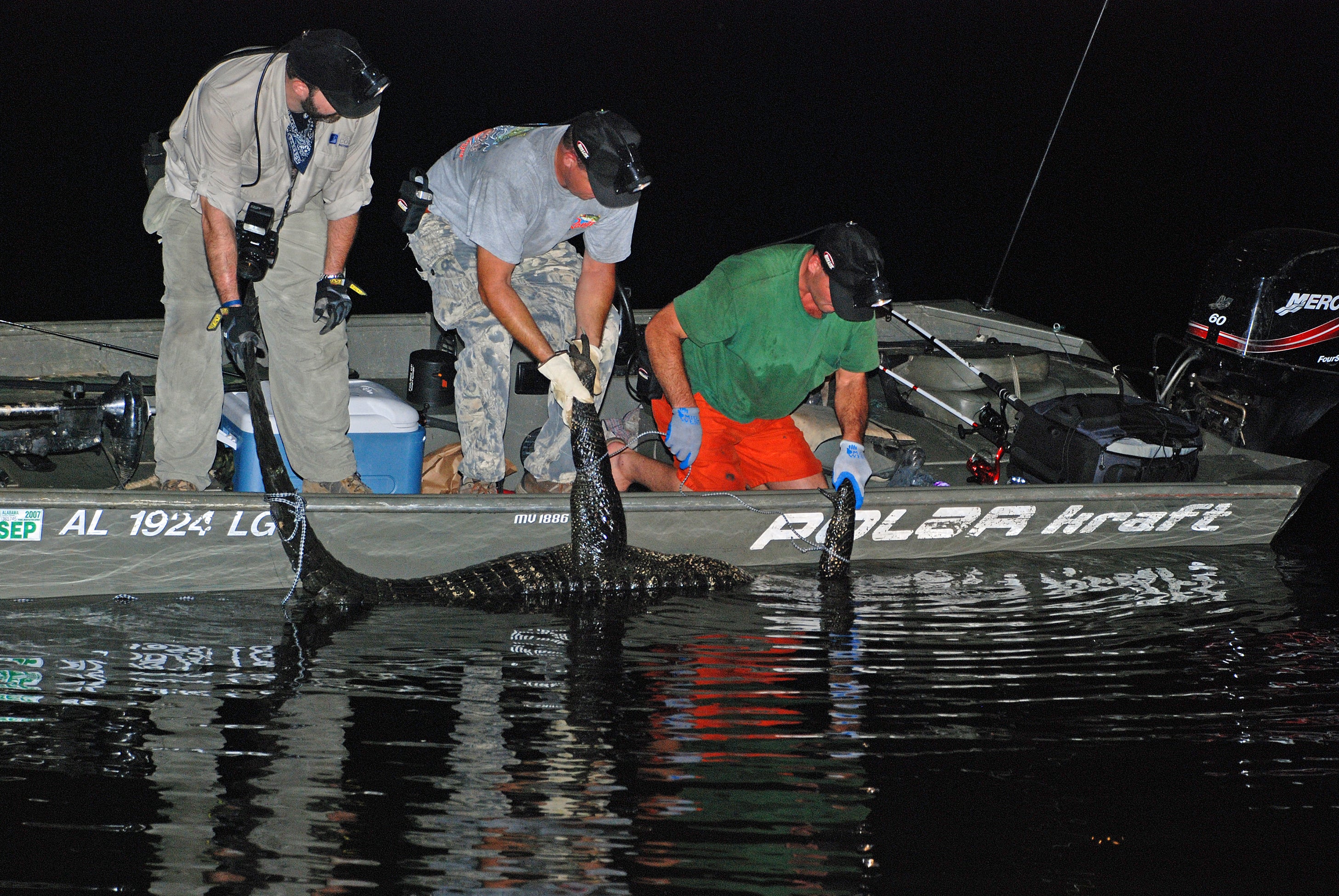By DAVID RAINER, Alabama Department of Conservation and Natural Resources
With Alabama’s 2020 alligator season only a couple of weeks away, the Alabama Wildlife and Freshwater Fisheries (WFF) Division wants to remind those lucky tag holders about the no-cull rule in effect.
With the exception of the Lake Eufaula Zone, tag holders are not allowed to release an alligator after it has been captured. The exception for the Lake Eufaula Zone is because it is the only zone that has a minimum size length, which is 8 feet total length. In this zone, only alligators that are under 8 feet in length may be released after capture. In all other zones, culling is completely prohibited.
“Many folks who have been going to classes for years and are now getting the training online understand about culling,” said WFF Director Chuck Sykes. “However, I think some hunters have abused our leniency in enforcing the regulation. We just want to make sure that everybody is aware that culling is not a legal practice. This is not a fishing trip where you practice catch-and-release. This is a cold-blooded animal that expends a great deal of energy during the fight and that could end up as an unexpected mortality.
“When you have 5,000 or so people apply for one of these coveted tags, we don’t want people abusing the process and making it look like a catch-and-release fishing tournament. We just wanted to clarify that culling is not allowed.”
Wildlife Section Chief Keith Gauldin said this regulation has been in effect since Alabama’s 2018 alligator season.
“Just as you don’t capture and release any other game animal, hunters are not allowed to practice releasing alligators unless they are hunting in the Lake Eufaula Zone, where there is a minimum harvest length of 8 feet,” Gauldin said. “A captured gator is your gator, so be sure to review the training videos on the website. The videos give you helpful tips on how to judge the size of an alligator.”
Gauldin said there is a direct correlation between the distance from the gator’s nostrils to its eyes and the total length of the animal. If the distance from the nostrils to the eyes is 10 inches, the estimated total length of the alligator would be 10 feet. Visit www.outdooralabama.com/alligator-hunt-tag-training-videos for the six training videos and one that explains the no-cull regulation.
Tag holders must abide by the rule that applies when an alligator is “captured.”
“In the past, we have seen individuals on social media posting alligators that they have captured, taken pictures of and then released,” Gauldin said “We don’t want hunters to cause any undue stress on these animals.
“By regulation, an alligator is considered captured once it is secured with a snare around a leg or the head and is secured boat-side and in control. It must be immediately dispatched and the temporary tag applied. We want to stress that before hunters pursue an alligator and throw a hook at it or any of the legal means of catching an alligator, they should view that gator and estimate its size closely. They need to make sure that’s the one they want to harvest.”
Gauldin said another rule that will be closely enforced has to do with boats providing assistance during the pursuit of an alligator.
“When hunting parties have multiple vessels involved, only the boat with the tag holder can have the capture equipment in it,” he said. “The other vessels that are assisting can only have spotlights but no capture equipment.”
Capture methods are restricted to hand-held snares, snatch hooks (hand-held or rod/reel), harpoons (with attached line), and bowfishing equipment (with line attached from arrow to bow or crossbow). The use of bait is not allowed.
Gauldin said the WFF’s Enforcement Section will be out in full force during the alligator season to ensure the regulations are followed.
“There is a high likelihood hunters will be checked by a Conservation Enforcement Officer at least on one of the nights of the season,” he said. “It’s a good idea to put all of your identification, hunting license and alligator tag in a Ziploc bag for easy access instead of having to dig it out of your wallet at one o’clock in the morning. Have that ready for presentation when you get checked. It will make it easier for our officers and make for a more timely check for the hunters.”








